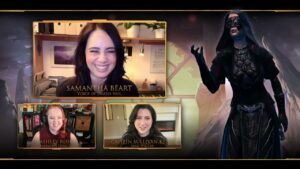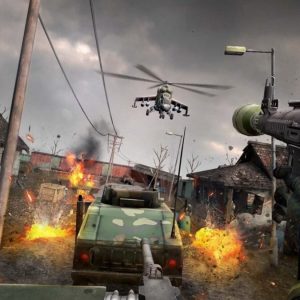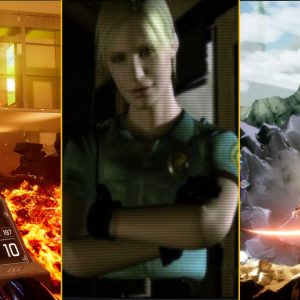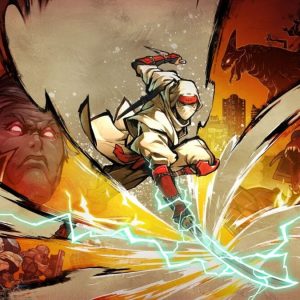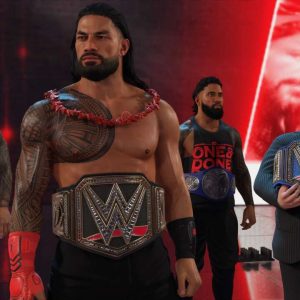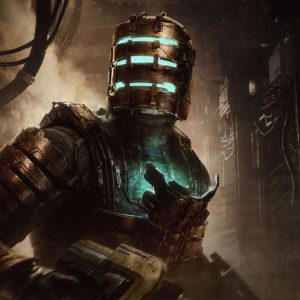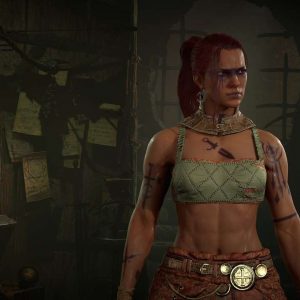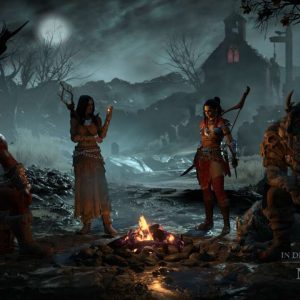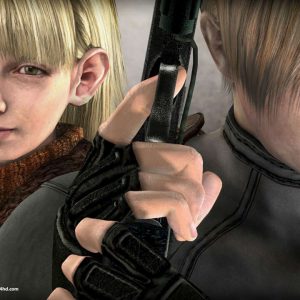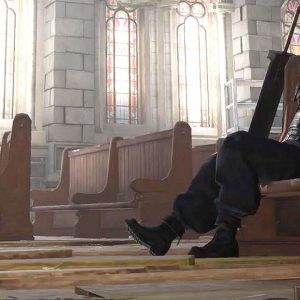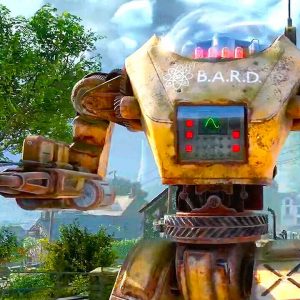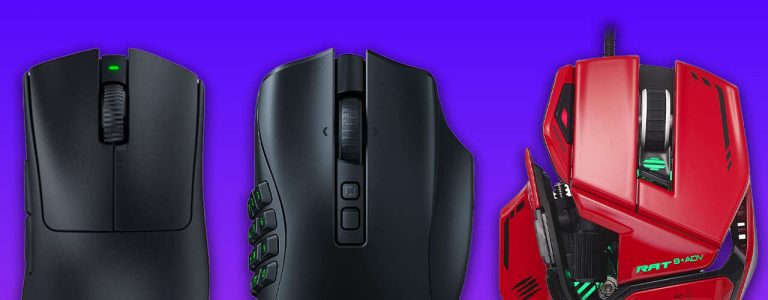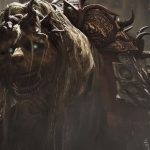Before I sat down to play about three hours of Mafia: The Old Country, Hangar 13 president Nick Baynes repeatedly mentioned his team’s desire for players to finish this prequel’s story. And so with that goal in mind, the latest Mafia game turns back the clock both chronologically – it’s set in the early 1900s in Sicily – and in game design as well. Mafia 3, though very good, went full open-world, and the developers seemed to feel similarly about it in hindsight as players did: it just didn’t fit Mafia well. The first two Mafias were gorgeous, narrative-driven, linear games set against the backdrop of a stunning and highly detailed world that, while explorable, really only existed as a beautiful backdrop for your main mission, rather than trying to keep you busy with menial tasks and sidequests. In fact, Baynes seemed to suggest that the positive reception to 2020’s remake of the first game (Mafia: Definitive Edition) served as something of an inspiration to and north star for this fourth entry in the mainline series.
I’m pleased to report that after playing through Chapters 3, 4, and 5 of The Old Country, the development team has seemingly succeeded in returning Mafia to its gameplay roots. This is, like Mafia 1 and 2, a story-first, not-open-world action-adventure. And interestingly, your primary, upgradeable weapon isn’t a gun – though they are certainly here – but rather, your knife. Stealth is fully supported, and even better, it’s only going to be $50 at launch, or as I like to call it, the Reverse Randy Pitchford price tag.
That Old Familiar Feeling
When I first picked up the controller – playing on a high-end PC, which is where the footage you’re seeing in the video at the top of this page and directly above came from – it’s the early 1900s and late-teenager Enzo Favara has recently escaped the sulfur mines he spent his childhood laboring in and started to become his own free man while working in the vineyard of Don Torrisi, a Sicilian mafioso who protects the people and property of the region from the thieving bandits that lurk in the hills – in exchange for monthly protection payments, of course. I really like how The Old Country tries to depict Enzo’s progression from a very innocent kid into a bound-by-blood, fully vetted member of the Torrisi outfit who’s got the green light to do anything he thinks needs to be done for the good of the family. We see this play out in Chapter 3, where Enzo’s first taste of life outside the vineyard with the Torrisis comes when he’s brought along on a series of collections by Luca, the Don’s right hand man, and Cesare, another made member of the family.
Luca and Cesare are essentially the mafioso version of an angel and devil on your shoulders, where Luca preaches patience and using violence only as a last resort, while Cesare is more of a “shoot first and ask questions later” kind of guy. For example, on our first collection stop, we visited Marco, an olive farmer. Marco always pays on time, but on this occasion, he’s late. Luca gives me an unloaded gun to be used only as an intimidation tactic to get Marco to pay up, but Cesare told me, “An extra pair of hands helps jog their memory” about the late payment. Side note: I think I saw more fruit in three hours of playing Mafia: The Old Country than I’ve seen in any game ever. We might need a new Game Awards category for this. Ultimately, no bullets were fired nor punches thrown, and I got the Don’s money from Marco’s safe after finding the combination nearby. I appreciate that Hangar 13 put thought into Enzo’s journey into the Torrisi crime family here and didn’t just instantly let you become a murdering psychopath.
Things escalated slightly on our second stop, though, after we rode our horses across the Sicilian countryside to the farm of Mr. Bangalino, whose workers, led by a man named Manuele, are on strike. “We can’t have strikes around here, Manuele,” Luca told the not-working men. “You and your friends need to get back to work. This is bad for business.”
By the way, I can’t emphasize enough how much I enjoyed staring at the countryside while riding to each destination on this mission. Mafia: The Old Country ditches the proprietary engine it’s used in all three previous Mafia games and moves to Unreal Engine 5 for this installment. To be fair, the previous engine was no slouch; Mafia 2 in particular was a strikingly good-looking game at the time it came out, and Unreal maintains the series’ reputation for delivering lovely locations. The perfect blue skybox and pillowy clouds that set atop the rolling green hills and farmlands did a great job of establishing The Old Country’s Sicilian setting. I can’t wait to see more of this world in the rest of the campaign.
Anyway, Manuele pulled a knife, introducing me to what is, as I mentioned earlier, perhaps the weapon that Mafia: The Old Country puts the most importance on. You can unlock and earn new knives, and each has unique modifying properties, giving you a reason beyond the cosmetic appearance of each blade to choose a specific one that suits your combat preferences. You’ve got a lot of moves in a knife fight: thrusts, slashes, parries, and dodges (like in the Batman: Arkham games, heavy attacks can’t be parried and must instead be dodged).
And there was still one final collection errand to run in Chapter 3, and as you may have guessed by now, the cannoli hit the fan on this one. A visit to a farmer named Fichera sees him yell at us, in a reversal, because his new water pump was stolen by bandits and the protection he pays Don Torrisi handsomely for didn’t protect his valuable property. It’s finally here that the patient Luca tells Enzo that he’s got free reign to put live ammo in his gun and not be afraid to pull the trigger, as these lawless bandits were effectively putting their hands in the Don’s pocket by stealing from Fichera. This leads to a hunt up the hillside through two separate bandit camps before we finally squared off with – and shot many bullets into – the dozen or so wayward thieves that stood between us and the water pump they stole. The familiar third-person cover-based shooting gameplay will be instantly recognizable not just to Mafia series regulars but also anyone who’s played a good third-person action game in the past decade. The Old Country isn’t breaking the mold here, but the gameplay systems are comfortable, effective, and fun. Less comfortable – at least for me – was the cutscene that followed the death of the last of the bandits, when Cesare cuts off the finger of one of the bandits, takes his gold ring as a bonus payment for his troubles, and tosses the detached digit into the well.
Forbidden Love
With all of your onboarding completed in Chapter 3, the next section of Mafia: The Old Country saw one massive mission play out, involving the Don’s daughter Isabella, who Enzo clearly has reciprocated feelings for, and Gennaro, the son of Baron Fontanella, who’s arguably an even bigger fish in the Sicilian mafioso sea than Don Torrisi is. Gennaro wants to show off his fancy new car – and he also wants to woo Isabella – so he sets up a picnic date in the nearby ruins. It starts with Enzo having to babysit the gathering and ends with a kidnapping, a car chase involving you on a horse, a trail of bodies left in Enzo’s wake, a stabbed double-crossing business partner, a happy Don Torrisi, and an even-more-smitten-with-Enzo Isabella.
It started quietly, with Gennaro driving Cesare in his car to the ruins, and Isabella insisting on riding there on horseback alongside Enzo. Yes, you’ll be able to choose and ride your own horse in Mafia: The Old Country, with each steed even having its own personality and characteristics. Based on what I played, it didn’t necessarily seem like your choice of horse would materially affect gameplay, but it was a welcome way to add a bit of life and meaning to the narrative nevertheless.
A pit stop en route showed off the camera you can take pictures of scenic spots with; unfortunately it was the only opportunity I had to use it in the three hours I played, but hopefully you get to use it semi-regularly over the course of the campaign. You’re also introduced to the driving mechanics of The Old Country after you rendezvous with Cesare and Isabella in the form of a low-stakes race around the ruins – perhaps a nod to one of Mafia 1’s most infamous missions.
But while Cesare and Enzo are messing around with Gennaro’s car during his date with Isabella, bandits – I won’t spoil their identity here – swooped in with guns blazing and kidnapped them both. They were really only after Gennaro, and having to take Isabella as well proved to be…well, as you can imagine it ended up severely complicating things for the kidnappers. I got to wield a shotgun in this segment and found that it packed a satisfying punch. There was no bringing a knife (let alone stealth chokeouts) to a gunfight here; I brought Enzo in with an itchy trigger finger.
After the aforementioned chase, I was able to run down their wagon – and gun down plenty of the kidnapping cadre – and rescue Isabella, who rewarded Enzo with a kiss (don’t tell the Don!). But while Cesare brought Isabella back home, Enzo still had to get Gennaro back, because returning without either one would leave Enzo equally dead from either father. It’s this section that allowed me to really unleash my inner Sam Fisher, as it was set up for stealth rather nicely in an open area, letting me pick my path and remain undetected. If you give me a stealth option in a game I am going to take it nine times out of ten, and Mafia: The Old Country was no different. The developers told me that they don’t expect most players to make it through the entire area – which was admittedly quite large and stocked with a ton of bad guys – without alerting anyone. I took this as a personal challenge, and while I held out for quite a while, eventually I did get spotted and had to start shooting.
But while you are in The Old Country’s stealth segments, basic Splinter Cell rules are in effect. You crouch to make less noise, throw coins (or picked-up objects like bottles) to distract bad guys, and can either knife them quickly or try to strangle them unconscious, which triggers a button-mashing QTE you’ve got to be quick about, lest they slip out of your grasp. There are even conveniently placed empty containers around that you can hide the bodies in so that they’re not discovered. The Old Country doesn’t break any new ground here, but in my experience, it does familiar stealth gameplay reasonably well. I do appreciate that there are upgradeable bead slots on your rosary that affect gameplay, like one that dampens the sound of your footsteps.
And I appreciated those dampened footsteps until I reached the last man standing for the kidnappers: Messina, whose real story you’ll learn when you play the game yourself. Enzo challenged him to a knife fight, which Messina accepted by dropping his gun and engaging Enzo on his terms. I was having trouble timing my parries just right in the ensuing battle, but I kept enough blood in Enzo’s body for him to emerge as the victor in the fight. (Side note: I died a couple of times during my three hours while playing on Normal, but there are multiple difficulty levels to choose from if you want to ratchet things up or down.) And after returning to the vineyard, Don Torrisi, after hearing of Isabella’s kidnapping, tells Enzo he wants Messina alive. Whoops. Um, yeah, about that…But ultimately, I did good, the boss said. And Isabella made her feelings quite clear with the smile on her face directed at Enzo.
Home Invasion
Chapter 5 – the final one I got to play – let me again flex my stealth muscles by tasking me with infiltrating the home of the man ultimately responsible for calling for the Gennaro (and by collateral damage, Isabella) kidnapping and dragging him out of his house and back to my boss. Or, put another way, to kidnap the kidnapper. This mission could truly have been pulled straight from a Splinter Cell game, as I had my choice of ways up the hillside to the large villa at the top. I kept it quiet, stabbing my way through the human obstacles in front of me before eventually getting into the house and to my target.
I wouldn’t be so lucky on the way out, though, as by the time I walked out with my target in tow, everyone still left standing knew what was going on, and I had to shoot my way out. As to what happened to that man I brought to the Don? Well, you’ll find out.
The Old Country, the New Anticipation
I left my extended hands-on session with Mafia: The Old Country with very few concerns. In roughly three hours I played three chapters, but how many chapters are there? Whatever the number is, it didn’t feel like a story that was going to be wrapped up in a tidy six hours. I don’t know how long The Old Country ultimately is, but when factoring in the studio president’s comment about wanting everyone to see the end credits roll – as well as the $50 price tag – it’s safe to presume that this won’t be a 40- or even 30-hour game. But for my money, that’s fine. I’m a dad with a job; I’m good with Mafia: The Old Country being a game I can get through in a weekend or two.
And more importantly, I’m now quite confident I’m going to have a lot of fun playing through this one, however long it lasts. The gameplay mechanics are all solid if familiar, with enjoyable stealth, shooting, knife combat, and driving. And perhaps the most important ingredient in a Mafia game – the story – had me engaged and eager to see where it was going to go. It’ll be good to get back to a Mafia 1 and 2 vibe again. It’s been a long time.
Ryan McCaffrey is IGN’s executive editor of previews and host of both IGN’s weekly Xbox show, Podcast Unlocked, as well as our monthly(-ish) interview show, IGN Unfiltered. He’s a North Jersey guy, so it’s “Taylor ham,” not “pork roll.” Debate it with him on Twitter at @DMC_Ryan.


